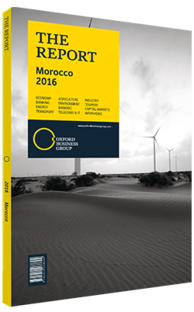Plans are under way to liberalise Morocco's exchange rate and increase competitiveness
Authorities in Morocco have long succeeded in keeping prices under control through monetary policy tools such as inflation targeting and an exchange rate peg that has avoided spikes in the cost of imports. Thanks to persistently low inflation, recent years have seen several interest rate cuts, the latest of which took place in March 2016, as low forecast growth led to reductions in inflation forecasts for 2016.
Against this backdrop of price stability, the authorities, with the backing of the IMF, are now working on plans to liberalise the kingdom’s exchange rate. While this could increase Morocco’s vulnerability to increases in the price of imported goods, observers argue that the benefits of greater competitiveness and less exposure to other forms of economic shock would more than outweigh the costs of the move.
Nevertheless, the authorities are adopting a cautious approach, with the initial focus on widening the band in which the dirham is allowed to fluctuate. As a result, a full move to a floating exchange rate is unlikely for several years at least.
Foreign Exchange
The dirham is currently pegged to a basket of currencies, of which the euro makes up 60%. This total was reduced from 80% in April 2015 and the dollar weighting was doubled to 40% in order to help raise the value of the dirham after it lost around 25% of its value in the previous year. The the central bank, Bank Al Maghrib (BAM), permits the currency to fluctuate up to 0.3% in either direction from its target rate, while the ability of Moroccan residents to exchange dirhams for foreign currency is restricted by capital controls.
The value of the dirham rose slightly against the euro over the course of 2015, from €1:Dh10.98 at the beginning of the year to €1:Dh10.75 at the end. In August 2016 the rate was €1:Dh10.85. Net international reserves stood at Dh243.28bn (€22.3bn) at the end of May 2016, according to BAM figures, up from Dh193.77bn (€17.8bn) year-on-year. The HCP estimated reserves were equivalent to 6.8 months’ worth of imports at the end of 2015, up from 5.3 months a year earlier.
Liberalisation
In its February 2016 Article IV consultation, the IMF described the currency’s valuation as in line with fundamentals, although it has pushed the government to liberalise the exchange rate mechanism to help absorb external shocks and boost competitiveness. While this is a long process, the improved current account and elimination of most fuel subsidies has made the economy and government finances less vulnerable to exchange rate shocks. Furthermore, the report notes that because the dirham has been pegged to a basket of currencies, the country’s banks are already prepared to manage exchange risk, having had experience in dealing with changes in bilateral rates.
In April 2016 Abdellatif Jouahri, governor of the central bank, said BAM was working on a timetable for moves towards a more flexible currency regime. Any reform is likely to be gradual, and Jouahri highlighted that while the kingdom might eventually move towards a managed float, and later a free float, it would first increase the extent to which the value of the dirham is allowed to deviate from the central bank’s target rate and observe the impact on markets – a process he said could take several years.
Walter Siouffi, managing director for Morocco, Tunisia and Libya at Citibank Morocco, said that such a change would definitely boost the country’s image as a destination for investment, and its emergence as a regional financial hub, but he added that it would have a limited impact on investors familiar with the current regime, where there is in fact no limit on the repatriation of capital and dividend for foreign investments. However, a more flexible currency could allow Morocco to improve the competitiveness of its exports compared to countries such as Turkey and Brazil that have seen the value of their currency fall.
You have reached the limit of premium articles you can view for free.
Choose from the options below to purchase print or digital editions of our Reports. You can also purchase a website subscription giving you unlimited access to all of our Reports online for 12 months.
If you have already purchased this Report or have a website subscription, please login to continue.

